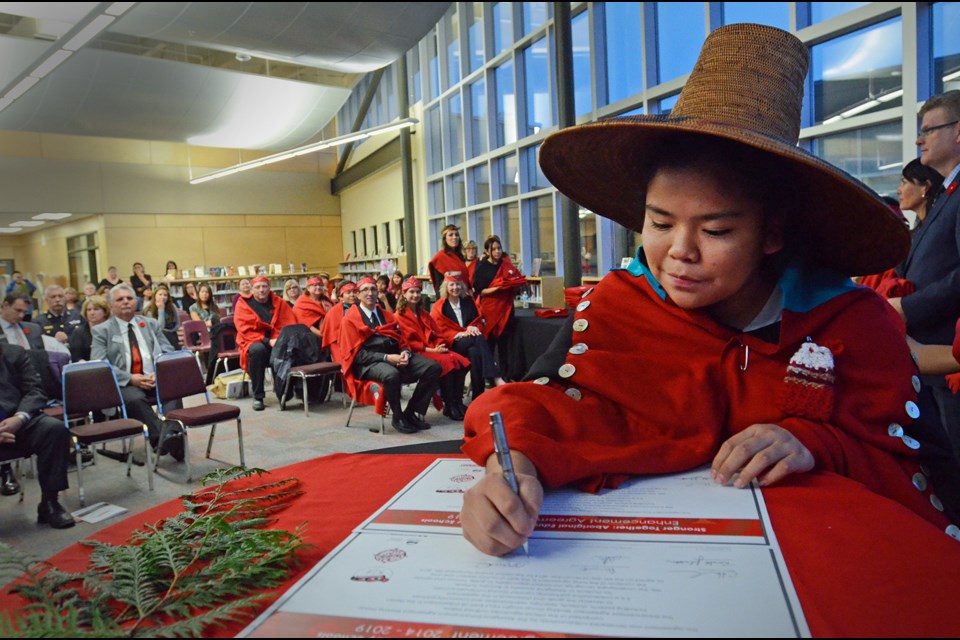“There was a time when our people weren’t welcome in places like this,” said First Nations drummer Rupert Richardson inside the Burnaby Central Secondary’s library last week.
It was a bittersweet reminder during a joyous celebration.
Richardson and others had gathered Thursday to sign the school district’s second aboriginal education enhancement agreement and to celebrate that that dark time was gone.
In an emotional ceremony that featured drumming, a cedar cleansing ceremony and traditional dancing by former and current Burnaby students, district officials, representatives from the ministry of education and members of the aboriginal community committed to a second five-year agreement to support aboriginal learners in local public schools.
The work of two years of consultation and collaborative dialogue, the agreement focuses on cultural development, social-emotional development and academics for the district’s 856 aboriginal students, who make up 3.4 per cent of the total student population.
Marjean Brown, head teacher at Parkcrest Elementary School and a 27-year teacher in the district, said education officials here have worked hard to create a sense of belonging in aboriginal students, and that has paid off for her kids, both of whom have gone through the local system.
“My children have always felt like they belonged,” she said.
Her sentiments were echoed by former Burnaby student Jay Morven, who danced a number of traditional dances with his brother, Justin Percival-Morven during the signing celebration.
Morven was emotional as he recalled his time in Burnaby schools.
“Thank you all for making it the best you could because I loved high school and I have all you to thank for that,” he said.
Despite the successes, Brown said the district still has a lot of work to do.
Since the first agreement was signed in Burnaby in 2008/09 – when only about two out of five aboriginal students were graduating within six years of starting Grade 8 – there has been significant improvement, but in 2012/13, still only about half were graduating within the six-year timeframe.
In a common theme during the ceremony, Brown said it is also important to expand First Nations cultural and historical education to encompass the greater student population.
“We’re going in the direction of trying to educate everybody now,” she said.
Finally Brown was among several speakers to note the agreement was created to meet the needs of students and therefore not set in stone.
“It needs to be changed when it needs to be changed,” she said. “It’s a living document.”
To see the district’s second aboriginal education enhancement agreement, visit sd41.bc.ca.



